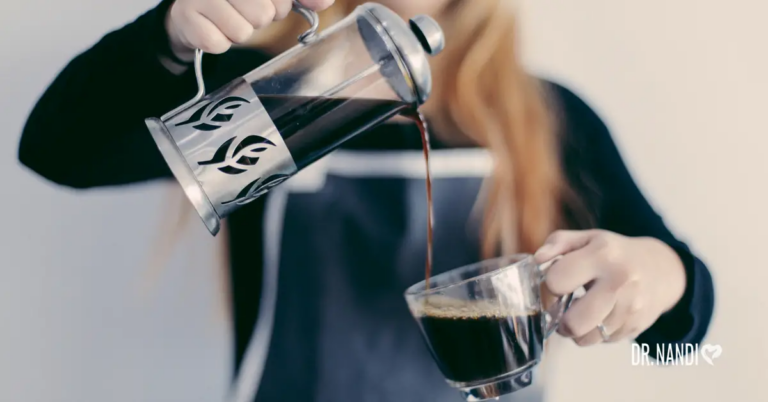Breast cancer continues to be a major health challenge worldwide, but its incidence notably differs across countries. This variation is starkly evident when comparing Japan and the United States.
In the US, 1 out of every 8 women will be diagnosed with breast cancer in their lifetime. In contrast, the rate is significantly lower in Japan, with only 1 out of every 38 facing this diagnosis. This means that the breast cancer rate in the US is alarmingly 375% higher than in Japan. [1,2]
Such a substantial difference prompts a critical inquiry into the factors behind these disparities, particularly the impact of dietary habits on breast cancer prevalence.
The Isoflavone Connection: Soy’s Role in Japan’s Lower Breast Cancer Rates
A key dietary factor contributing to Japan’s lower breast cancer rates compared to the United States is the consumption of isoflavones, found abundantly in soy foods. Isoflavones are plant-based compounds that mimic estrogen, but with a crucial difference – they can have both estrogen-like and anti-estrogen effects. This dual action allows them to potentially offer protective benefits against breast cancer.
In Japan, the traditional diet includes a significant intake of soy foods rich in isoflavones, such as tofu, edamame, and miso. These foods are not only staples in Japanese cuisine but also integral to their daily nutrition. Research suggests that the regular consumption of these soy products may be a central reason for the notably lower incidence of breast cancer among Japanese women.
Understanding the impact of isoflavones involves delving into how they interact with estrogen receptors in the body. While they can bind to these receptors, isoflavones often have a weaker effect compared to the body’s own estrogen. This can be particularly beneficial in breast tissue, where their milder action can help modulate the effects of estrogen, reducing the risk of estrogen-fueled breast cancers.
However, it’s important to approach soy consumption with balance and awareness. Not all soy products are created equal – fermented soy foods like tempeh and natto, and minimally processed options like tofu, are generally considered more beneficial than highly processed soy derivatives. Additionally, the context of overall diet and lifestyle factors also plays a significant role in these health outcomes.

Iodine: A Hidden Ally in Breast Cancer Prevention
Iodine, often overshadowed in discussions about diet and health, emerges as a crucial nutrient in the context of breast cancer prevention. This essential mineral is not just vital for thyroid function but also plays a significant role in maintaining breast tissue health.
Surprisingly, the iodine concentration in breast tissue can surpass that in the thyroid, underscoring its importance for breast health.
The link between iodine and breast cancer risk becomes evident when considering the consequences of iodine deficiency. Low iodine levels can lead to increased estrogen production in the ovaries, elevating the risk of reproductive and breast cancers. Moreover, iodine deficiency can make breast tissue more sensitive to estrogen, potentially increasing susceptibility to cancer development.
Research, including studies by Dr. Bernard Eskin, a pioneer in iodine research, indicates that iodine may not only prevent but also reverse precancerous changes in breast tissue and inhibit further tumor growth, all while sparing healthy cells.
The disparity in breast cancer rates between Japan and the United States can, in part, be attributed to differences in iodine intake. Japanese women, on average, consume substantially more iodine than their American counterparts, primarily due to their high consumption of iodine-rich foods like seaweed and other seafood.
This contrasts sharply with the Western diet, which often lacks sufficient iodine, partly due to reduced salt intake and the presence of environmental toxins that can impair iodine absorption.
Embracing Japanese Dietary Practices for Breast Cancer Prevention
Adopting aspects of the Japanese diet could be instrumental in lowering breast cancer rates. This approach involves more than just incorporating certain foods; it’s about embracing a holistic dietary style rich in diverse, nutrient-dense foods.
Here are key elements of the Japanese diet that can be integrated into our daily eating habits:
- High Consumption of Cruciferous Vegetables: The Japanese diet includes a variety of cruciferous vegetables like cabbage, broccoli, and kale, significantly more than the typical American diet. These vegetables are known for their glucosinolates, compounds that break down into cancer-fighting substances.
- Regular Intake of Soy Foods: Incorporating soy foods like tofu, edamame, and miso, rich in isoflavones, can be beneficial. These foods are staples in the Japanese diet and contribute to their lower breast cancer rates.
- Diverse Seafood and Iodine Sources: Japanese cuisine features a wide array of seafood, a primary source of iodine. Including fish, shrimp, and seaweed in your diet can boost iodine intake, essential for breast health.
- Incorporation of Fermented Foods: Fermented foods like miso and natto are common in Japanese meals. These foods not only add unique flavors but also offer probiotics for gut health.
- Mindful Eating Practices: The Japanese culture of eating emphasizes portion control and enjoying a variety of foods in moderation. This approach can contribute to overall health and weight management.
By integrating these elements into our diets, we can move towards a more balanced and health-conscious lifestyle. This change doesn’t necessitate a complete dietary overhaul but rather a thoughtful incorporation of Japanese dietary principles that align with our health goals, particularly in reducing the risk of breast cancer.

Beyond Diet: Other Factors Affecting Breast Cancer Rates
While diet plays a significant role in breast cancer rates, it’s crucial to acknowledge that this complex disease is influenced by a multitude of factors. Understanding these various elements can provide a more comprehensive view of breast cancer prevention strategies. Here are some key non-dietary factors:
- Genetic Predispositions: Certain gene mutations, like BRCA1 and BRCA2, significantly increase breast cancer risk. Genetic factors vary across populations and can influence overall breast cancer rates.
- Hormonal Influences: Hormones such as estrogen and progesterone are closely linked to breast cancer risk. Factors that prolong exposure to these hormones, like early menarche, late menopause, and hormone replacement therapy, can heighten the risk.
- Environmental Exposures: The role of environmental toxins, such as pollutants and radiation, in cancer development is increasingly recognized. Geographic differences in these exposures could partly explain the variance in breast cancer rates between countries.
- Lifestyle Choices: Beyond diet, lifestyle factors like physical activity, alcohol consumption, and smoking habits play a role in breast cancer risk. For instance, regular exercise and moderate alcohol intake are associated with a lower risk of developing breast cancer.
Recognizing the interplay of these diverse factors is essential for a holistic approach to breast cancer prevention. While diet is a pivotal aspect, it works best in conjunction with awareness and management of these other risk factors. This comprehensive understanding can empower individuals to make informed choices that contribute to overall breast health and well-being.
My Personal RX for Holistic Breast Cancer Prevention
As a doctor committed to promoting a healthy lifestyle, I believe in a comprehensive approach to reducing the risk of breast cancer. Here are my personalized tips, combining medical knowledge with practical advice, to empower you in your journey towards holistic health:
- Balanced Diet with Key Nutrients: Emphasize a diet rich in phytoestrogens and iodine. Include soy products like tofu and tempeh, and iodine-rich foods such as seafood and dairy. These can help maintain hormonal balance and support breast health.
- Regular Physical Activity: Engage in at least 30 minutes of moderate exercise daily. A mix of cardiovascular, strength, and flexibility workouts can aid in maintaining a healthy weight, a crucial aspect of breast cancer prevention.
- Limit Alcohol and Avoid Smoking: Reduce alcohol consumption and avoid smoking. Both have been linked to an increased risk of breast cancer, so moderation in drinking and cessation of smoking are important.
- Stress Management: Implement stress-reducing activities like meditation, yoga, or hobbies that bring joy and relaxation. Managing stress effectively is vital for overall well-being.
- Routine Health Screenings: Stay committed to regular breast health screenings, including mammograms as recommended for early detection.
- Women’s Core Essentials: Consider adding Women’s Core Essentials to your daily regimen. These specially curated supplements are designed to support the specific nutrient needs of women, ensuring that your body gets the necessary vitamins and minerals for optimal health.
- Follow a Holistic Protocol: Enhance your approach to wellness with my comprehensive Protocol, a free 50-page guide focusing on holistic health. This powerful resource offers insights and strategies for living your best life by addressing various aspects of health, from nutrition to mental well-being.

Sources:
- Breast cancer Statistics | How common is breast cancer? (n.d.). American Cancer Society. https://www.cancer.org/cancer/types/breast-cancer/about/how-common-is-breast-cancer.html
- Breast cancer rates rising among Japanese women. (n.d.). Roswell Park Comprehensive Cancer Center. https://www.roswellpark.org/cancertalk/201707/breast-cancer-rates-rising-among-japanese-women
- Laurie Toich, Assistant Editor. (2022, January 4). Breast cancer rates vary substantially in the US, Japan. Pharmacy Times. https://www.pharmacytimes.com/view/breast-cancer-rates-vary-substantially-in-the-us-japan
- Times, N. Y. (1970b, March 11). RAT CANCERS LINKED TO a LACK OF IODINE. The New York Times. https://www.nytimes.com/1970/03/11/archives/rat-cancers-linked-to-a-lack-of-iodine.html



















